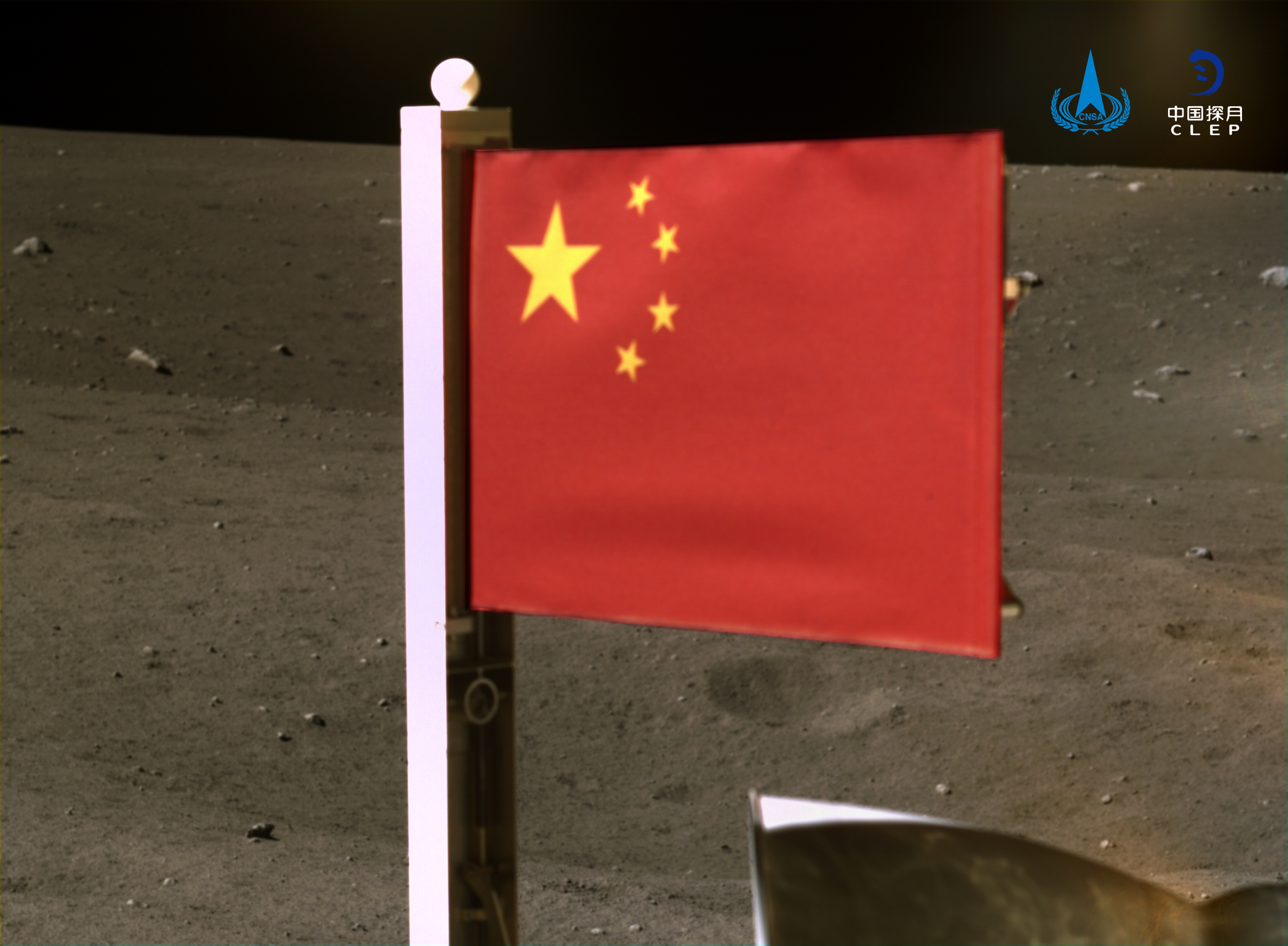China moon rock studies include fusion energy analysis, volcanic history

Several science institutions in China are now studying rocks collected from the moon by the Chang'e 5 mission for research that includes evaluating the material as a potential source of fusion power.
The Chang'e 5 mission delivered 3.82 lbs. (1.73 kilograms) of lunar material to Earth in December. A first batch of 31 samples, totaling 0.616 ounces (17.4764 grams), including fine grains, basalt fragments and glasses, were distributed to 13 Chinese institutions in July following a first round of applications.
The Beijing Research Institute of Uranium Geology is now studying a 50-milligram sample of lunar rocks to look for an isotope called helium-3. Helium-3 has been promoted as a potential fuel in future nuclear fusion power plants. While extremely rare on Earth, helium-3 is thought to be more abundant on the moon, with the isotope delivered into the unprotected lunar surface by the solar wind, a constant stream of material flowing off the sun and across the solar system.
Related: China On the Moon! A History of Chinese Lunar Missions in Picture
The institute is using equipment specially designed to determine the content of helium, while the container will also heat the sample and raise the temperature of the samples gradually, until it gets to about 1,800 degrees Fahrenheit (1,000 degrees Celsius).
"The main objective of the study is to determine the content of helium-3 in the lunar soil, the extraction parameters of helium-3, which indicates at what temperature we can extract the helium, and how helium-3 gets attached to the lunar soil. We will conduct a systematic study on these aspects," Huang Zhixin, a researcher in the Science and Technology Department of the Beijing Research Institute of Uranium Geology, told CCTV in late August.
The idea of mining lunar helium-3 for energy on Earth, however, may be a distant prospect at best, says Ian Crawford, professor of planetary science and astrobiology at Birkbeck, University of London. Crawford told Space.com that the enormous amounts of investment and infrastructure necessary for the mining, extraction and transportation of lunar helium-3 mean that cheaper and renewable terrestrial energy sources will probably be preferable.
Related: The latest news about China's space program
Get the Space.com Newsletter
Breaking space news, the latest updates on rocket launches, skywatching events and more!

"Nevertheless, making new measurements of helium-3 concentrations at new locations on the moon is scientifically valuable," Crawford said.
A number of groups and companies are studying the prospect of generating electricity from fusion power, yet technological and engineering hurdles remain. Proposed fusion reactor designs mostly opt for hydrogen isotopes called deuterium and tritium, which are plentiful on Earth, as fuel sources.
Meanwhile, the institute is also studying the samples for the possible presence of the radioactive element uranium.
"The research is not only of great value for the potential exploitation of such nuclear energy resources on the moon in the future, but also of great significance for the scientific study of the moon itself and its relationship with the Earth," Li Ziying, head of the Beijing Research Institute of Uranium Geology, said.
Across the nation, samples are informing a range of scientific investigations. Elsewhere, Li Xianhua, a professor of the Institute of Geology and Geophysics under the Chinese Academy of Sciences (IGGCAS), has studied the geochemical isotope characteristics of samples to try to determine the age of the rocks. The research could provide new information on when the latest volcanic activity took place on the moon, in turn offering fresh insights into the history of our celestial neighbor.
Li Chunlai, deputy chief designer of the lunar sample phase of China's lunar exploration project, said that the moon can fill gaps in Earth's own geologic history. Because Earth is an active planet, few records of its ancient times remain. "Records of the moon are quite old, so studying its evolution can supplement the Earth's evolution history," Li told CCTV.
Articles based on analysis of the samples have been submitted to major journals for review, including papers on water content and the age of the samples.
A second batch of Chang'e 5 samples is now open for applications, the China Lunar Exploration Project announced in July. China plans to launch Chang'e 6 to collect samples from the lunar south pole in 2024, which will provide further new samples.
Follow us on Twitter @Spacedotcom and on Facebook.
Join our Space Forums to keep talking space on the latest missions, night sky and more! And if you have a news tip, correction or comment, let us know at: community@space.com.

Andrew is a freelance space journalist with a focus on reporting on China's rapidly growing space sector. He began writing for Space.com in 2019 and writes for SpaceNews, IEEE Spectrum, National Geographic, Sky & Telescope, New Scientist and others. Andrew first caught the space bug when, as a youngster, he saw Voyager images of other worlds in our solar system for the first time. Away from space, Andrew enjoys trail running in the forests of Finland. You can follow him on Twitter @AJ_FI.









